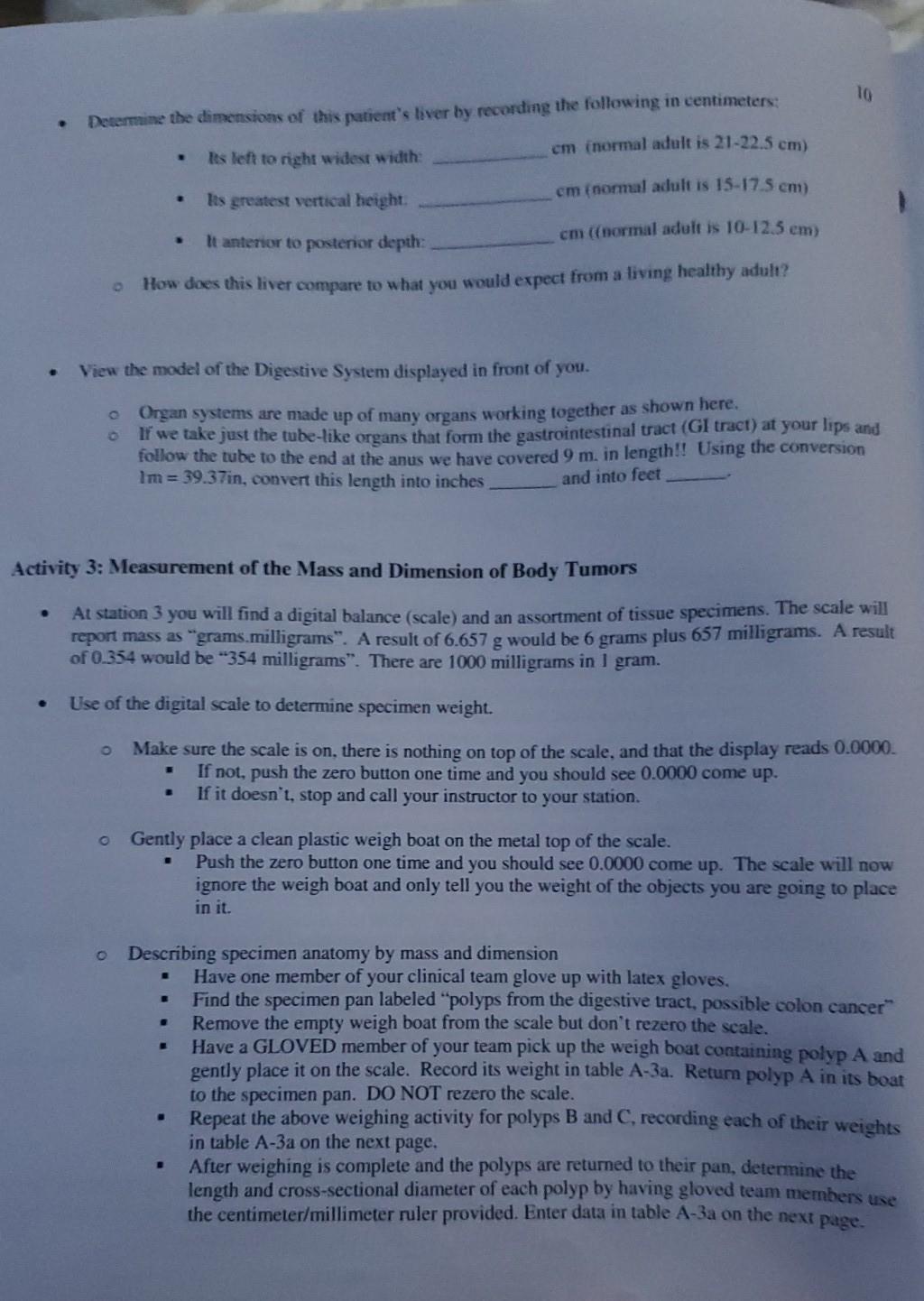
10 • Determine the dimensions of this patient's liver by recording the following in centimeters: cm (normal adult is 21-22.5 cm) Its left to right widest width: cm (normal adult is 15-17.5 cm) Its greatest vertical height: It anterior to posterior depth: cm ((normal adult is 10-12.5 em) How does this liver compare to what you would expect from a living healthy adult? View the model of the Digestive System displayed in front of you. Organ systems are made up of many organs working together as shown here. If we take just the tube-like organs that form the gastrointestinal tract (GI tract) at your lips and follow the tube to the end at the anus we have covered 9 m. in length!! Using the conversion Im = 39.37in, convert this length into inches and into feet Activity 3: Measurement of the Mass and Dimension of Body Tumors At station 3 you will find a digital balance (scale) and an assortment of tissue specimens. The scale will report mass as "grams.milligrams". A result of 6.657 g would be 6 grams plus 657 milligrams. A result of 0.354 would be "354 milligrams". There are 1000 milligrams in 1 gram. Use of the digital scale to determine specimen weight. Make sure the scale is on, there is nothing on top of the scale, and that the display reads 0.0000 If not, push the zero button one time and you should see 0.0000 come up. If it doesn't stop and call your instructor to your station. Gently place a clean plastic weigh boat on the metal top of the scale. Push the zero button one time and you should see 0.0000 come up. The scale will now ignore the weigh boat and only tell you the weight of the objects you are going to place in it. . Describing specimen anatomy by mass and dimension Have one member of your clinical team glove up with latex gloves. Find the specimen pan labeled "polyps from the digestive tract, possible colon cancer Remove the empty weigh boat from the scale but don't rezero the scale. Have a GLOVED member of your team pick up the weigh boat containing polyp A and gently place it on the scale. Record its weight in table A-3a. Retum polyp A in its boat to the specimen pan. DO NOT rezero the scale. Repeat the above weighing activity for polyps B and C, recording each of their weights in table A-3a on the next page. After weighing is complete and the polyps are returned to their pan, determine the length and cross-sectional diameter of each polyp by having gloved team members use the centimeter/millimeter ruler provided. Enter data in table A-3a on the next page. . .
没有找到相关结果